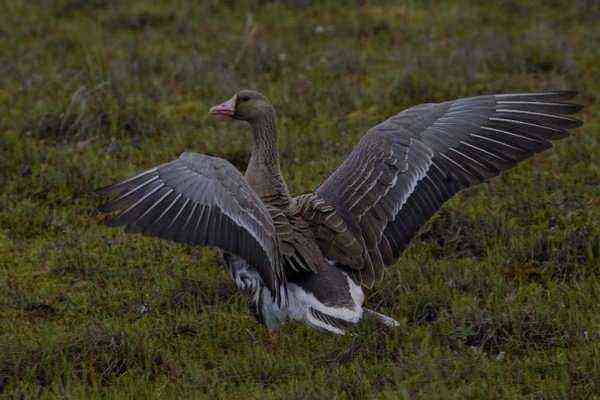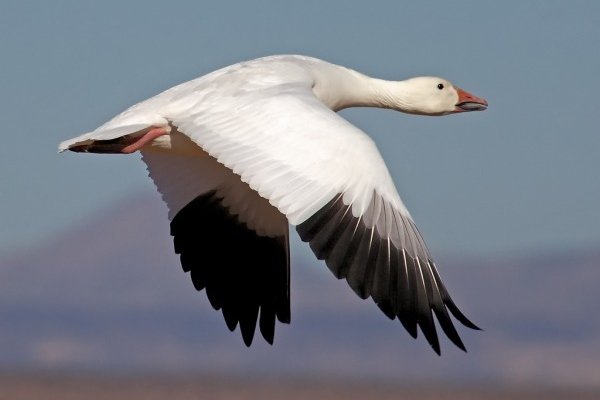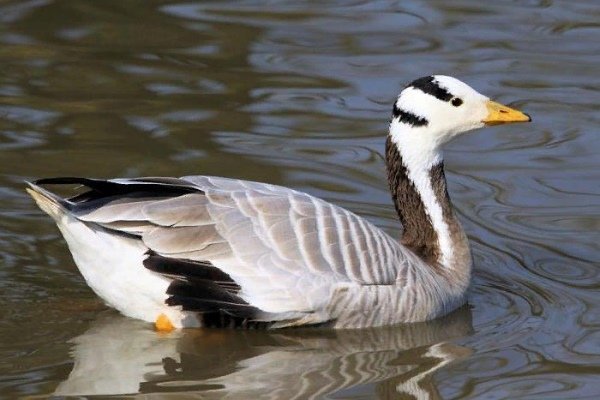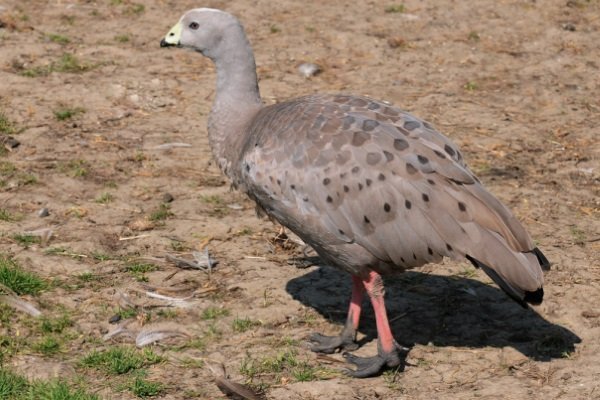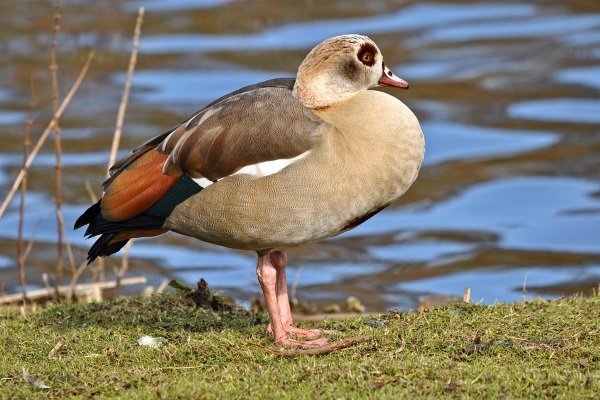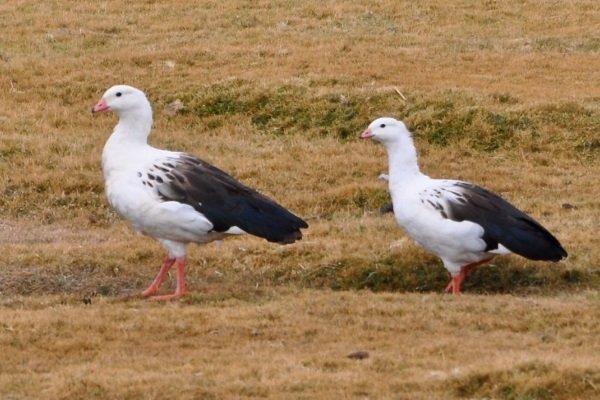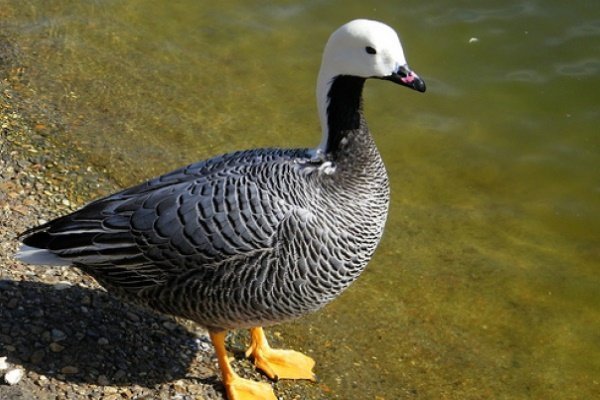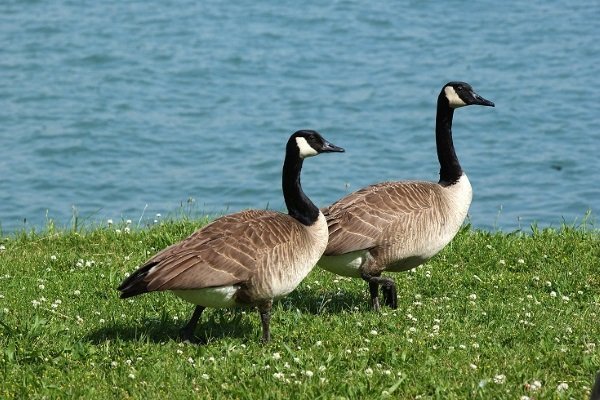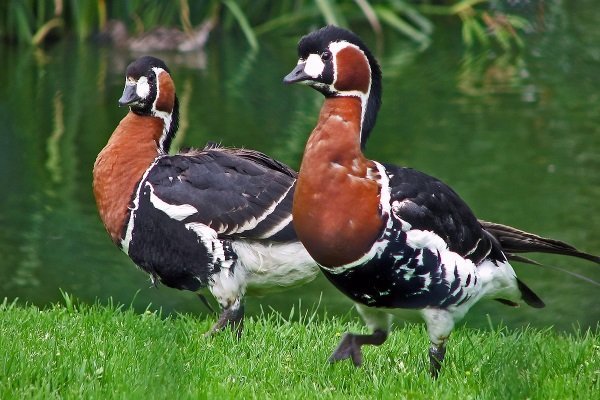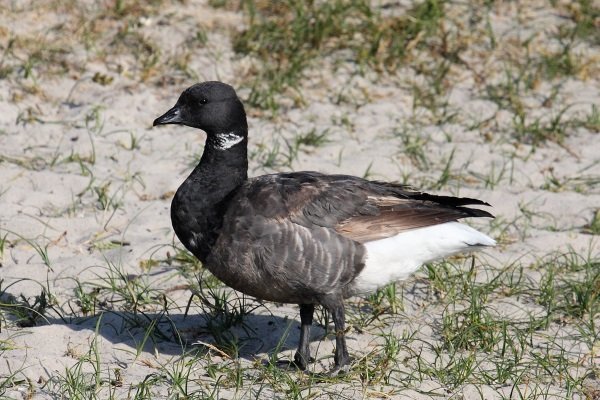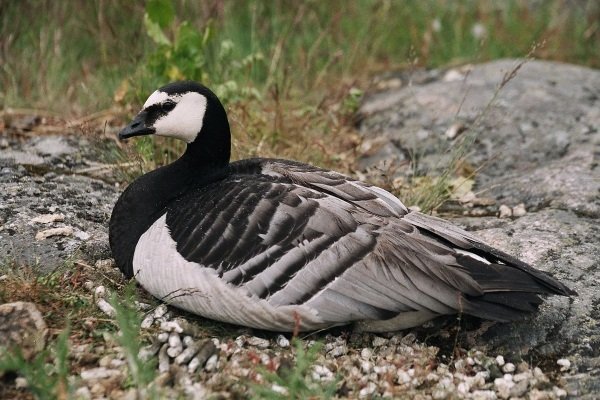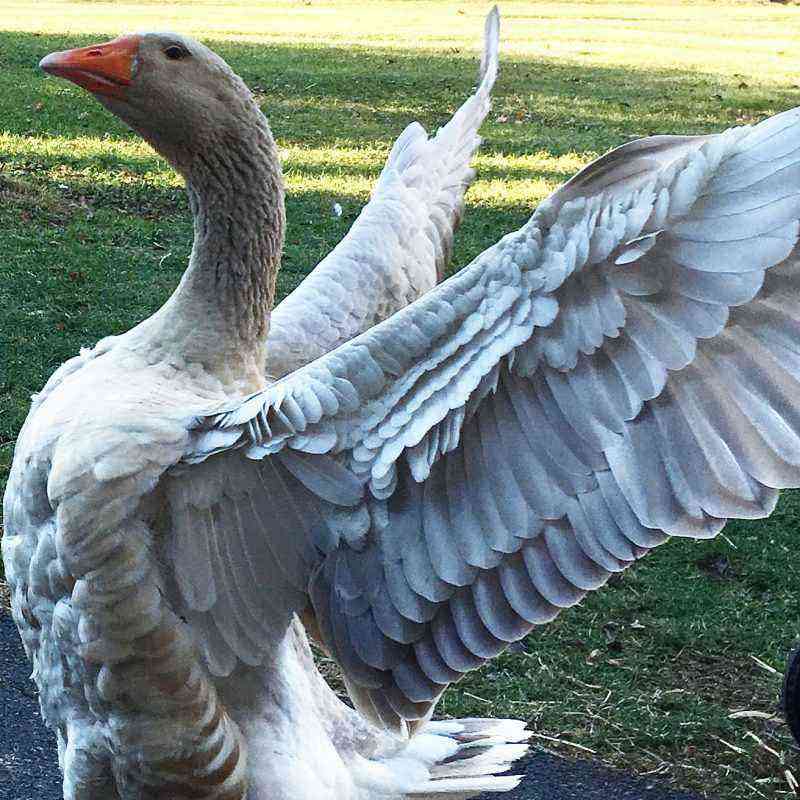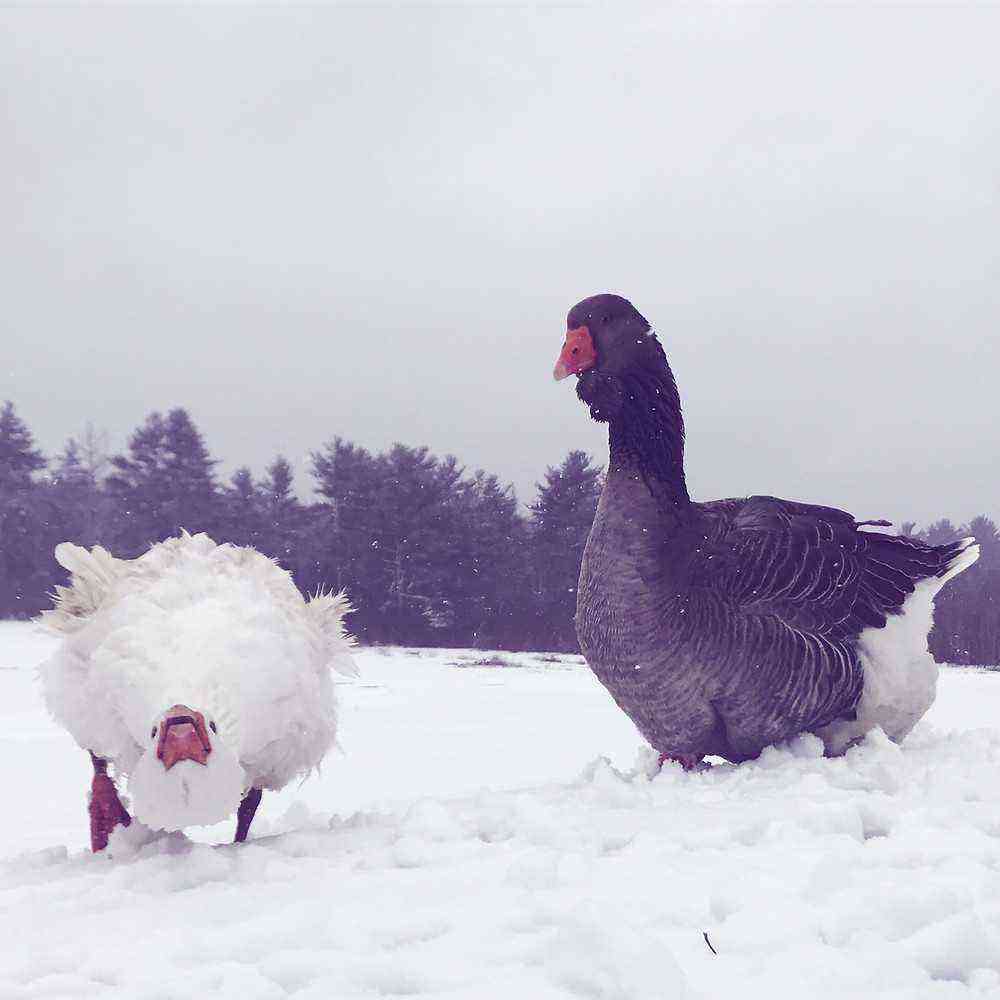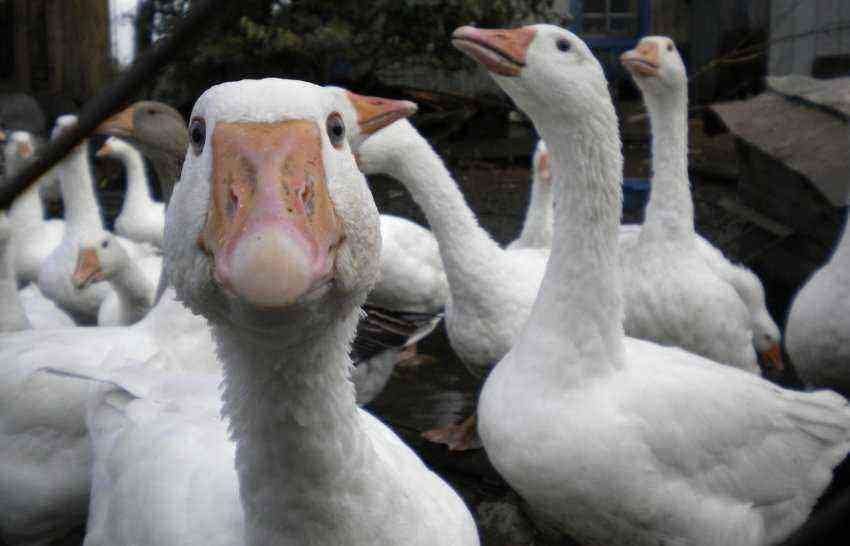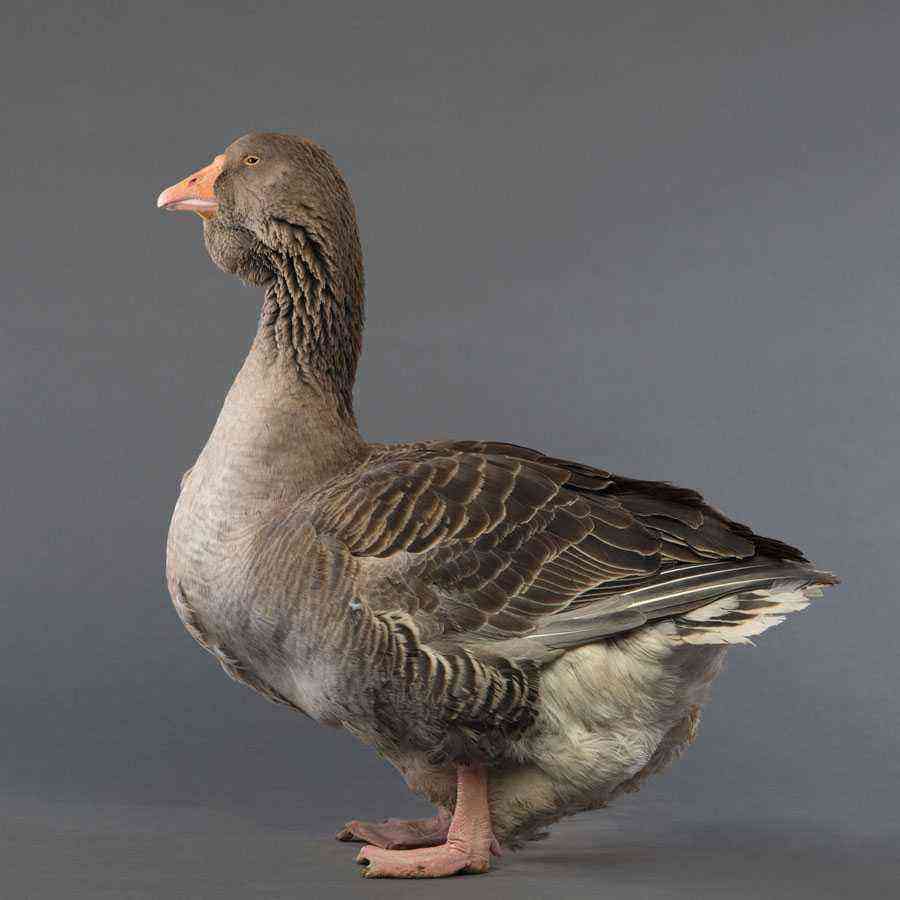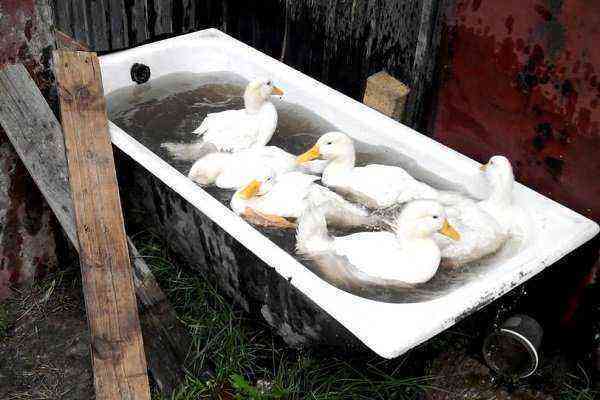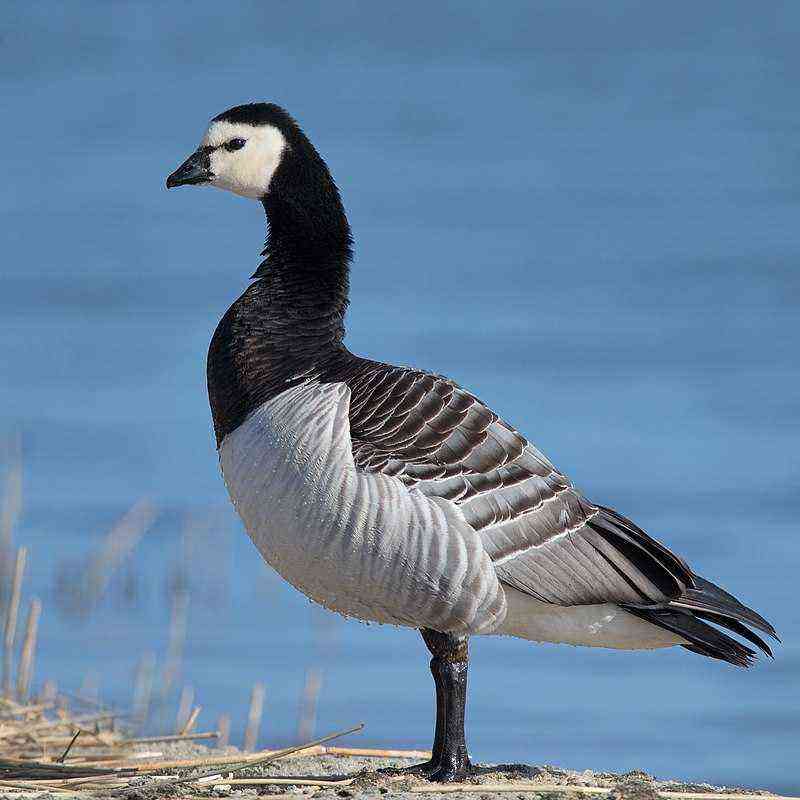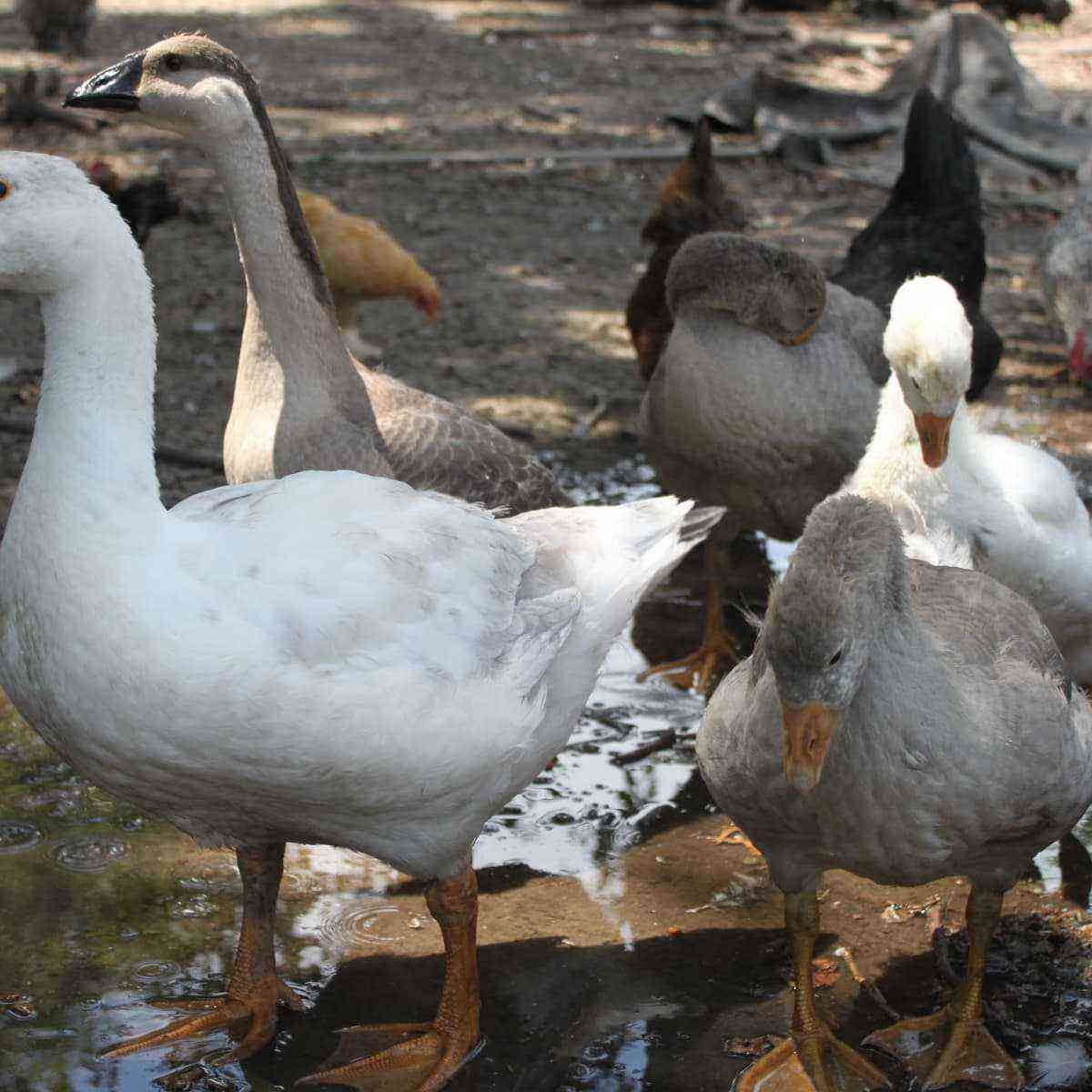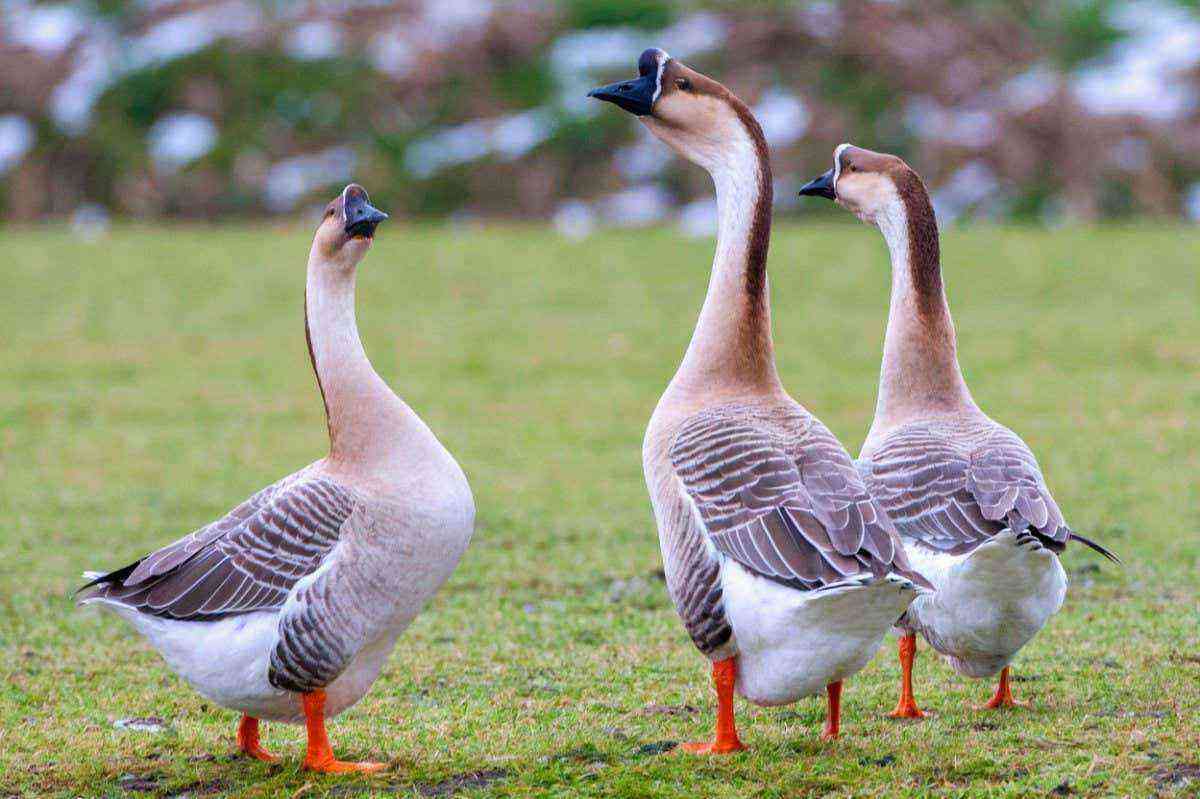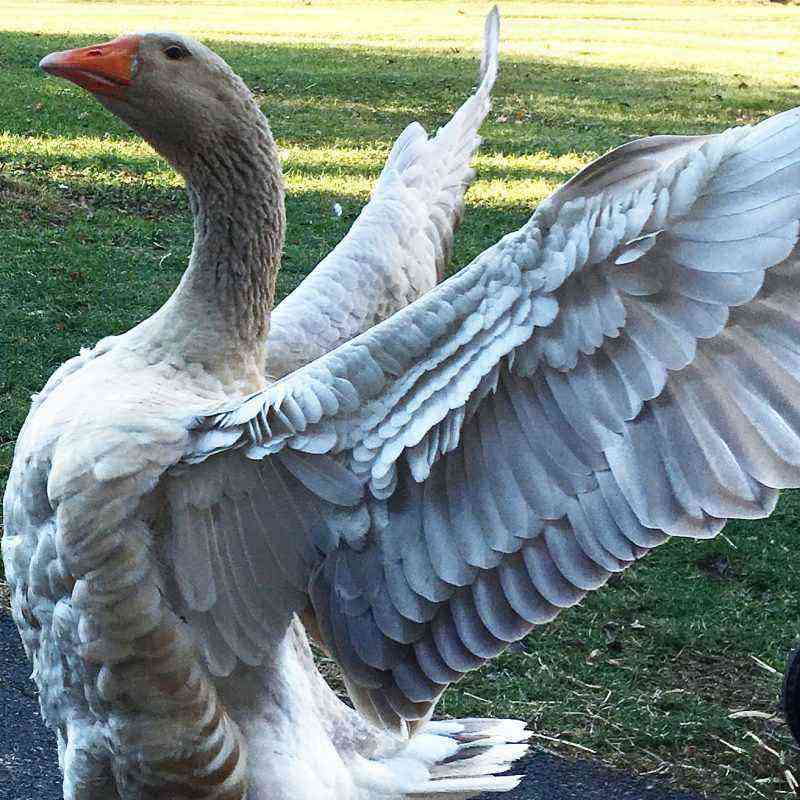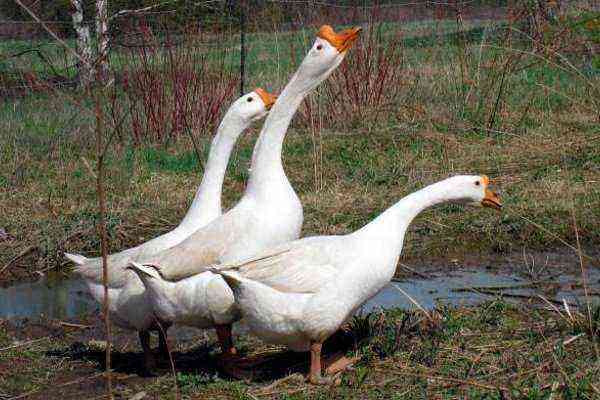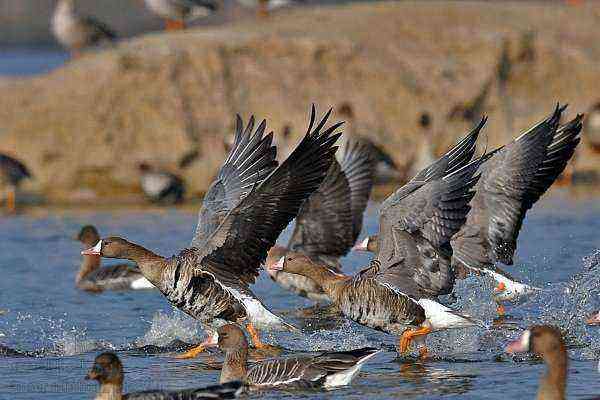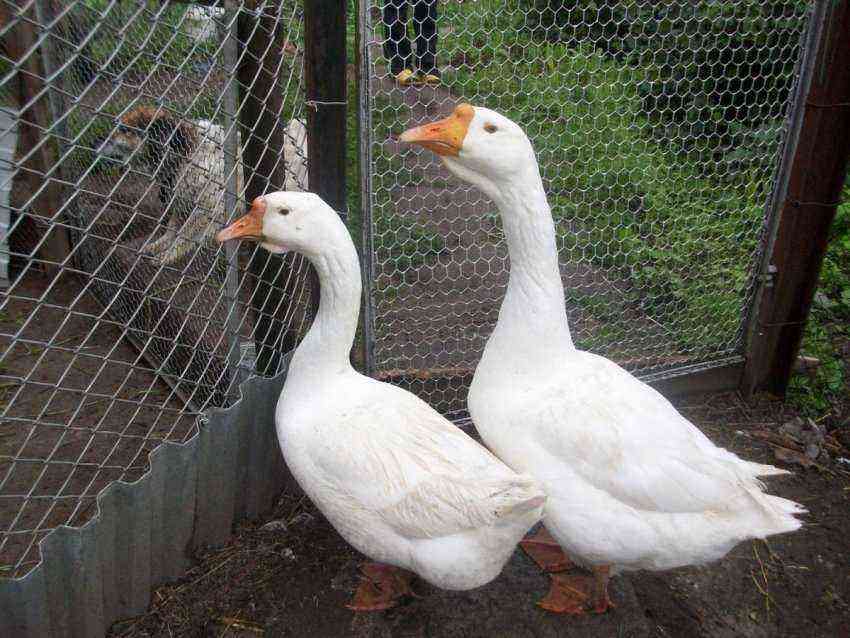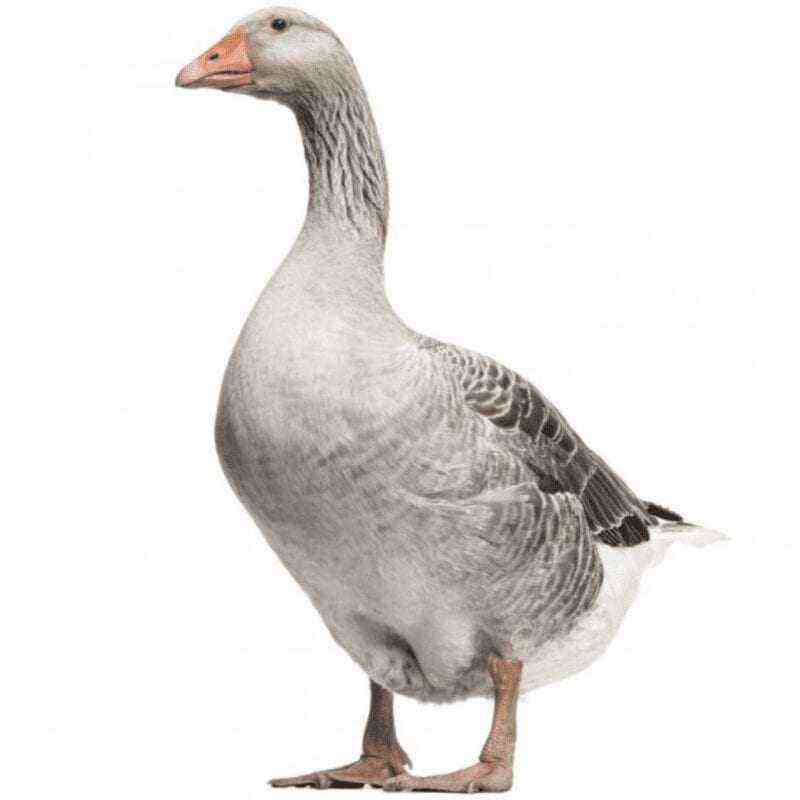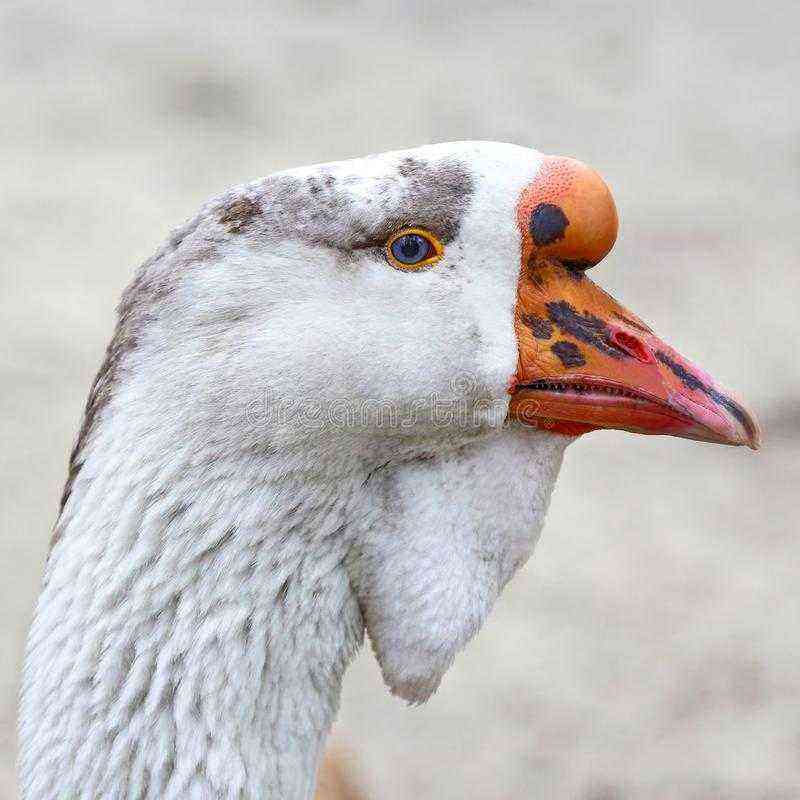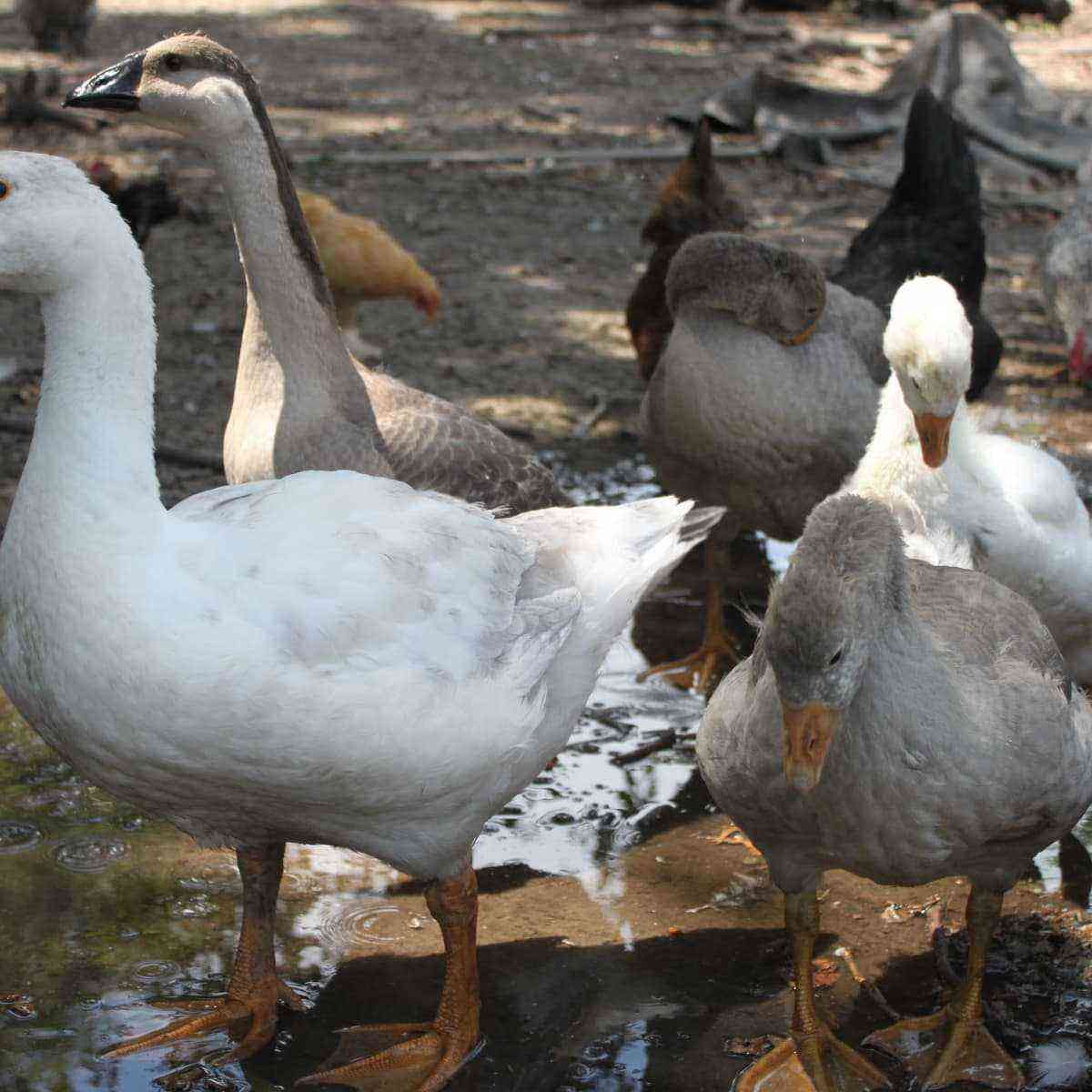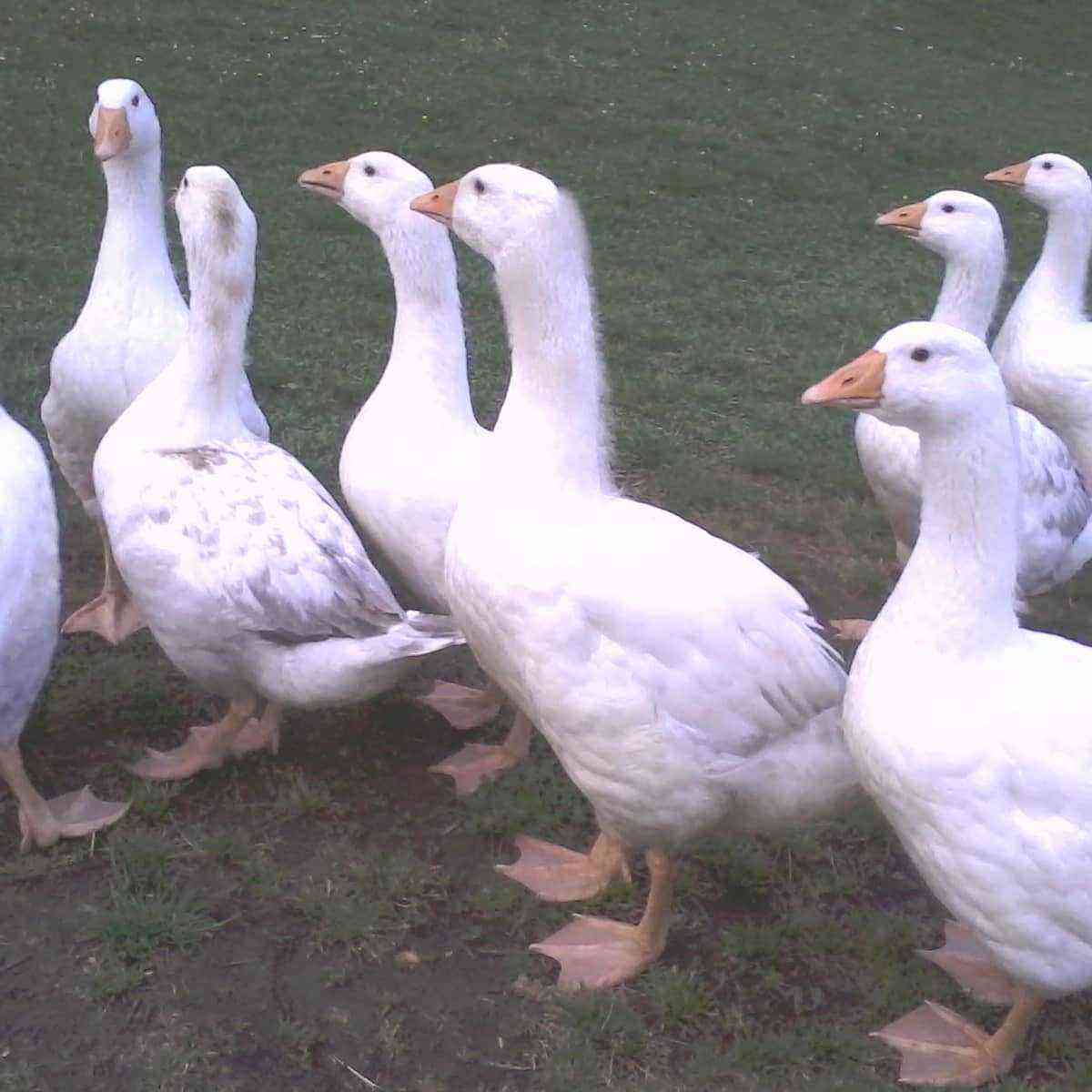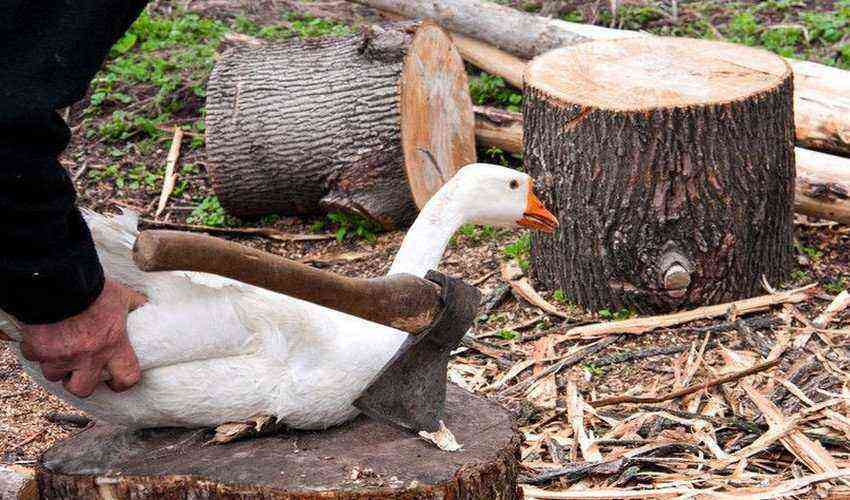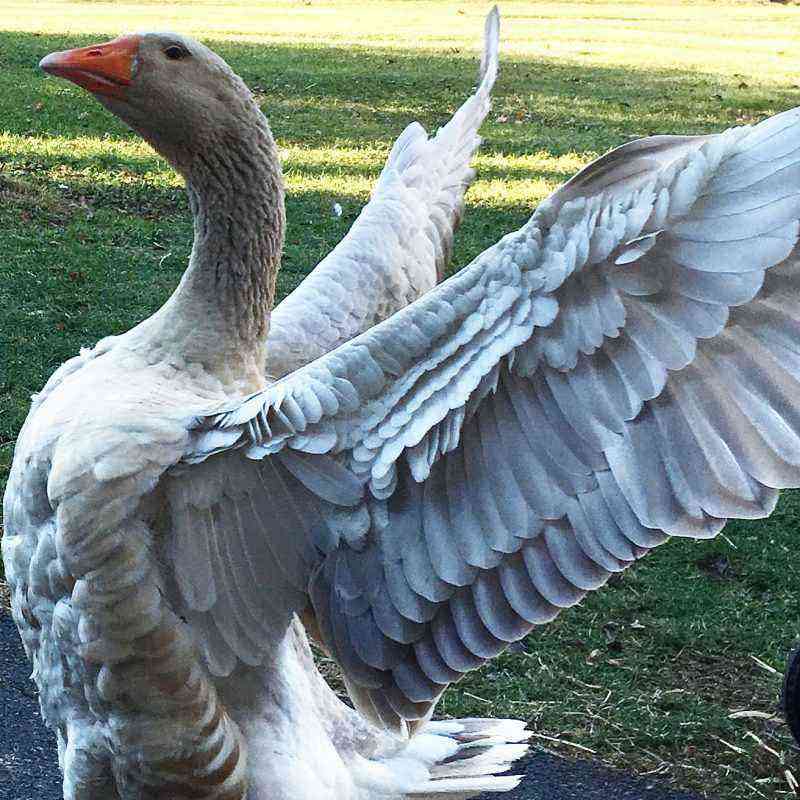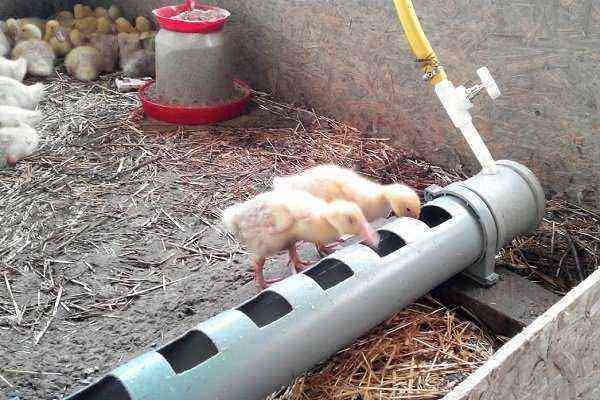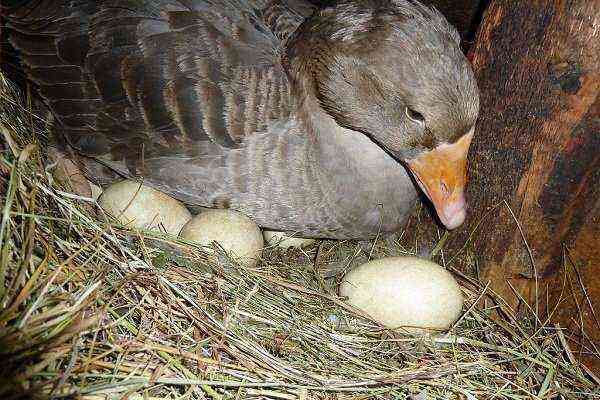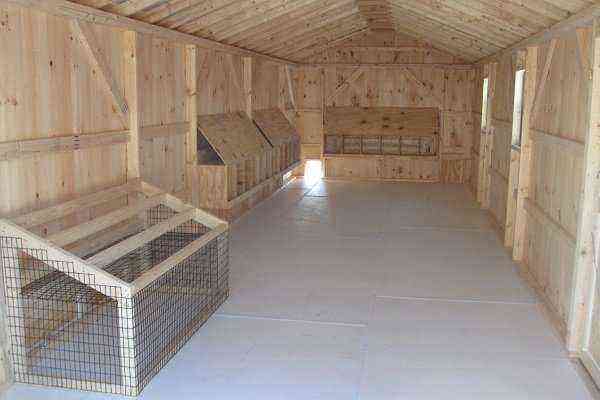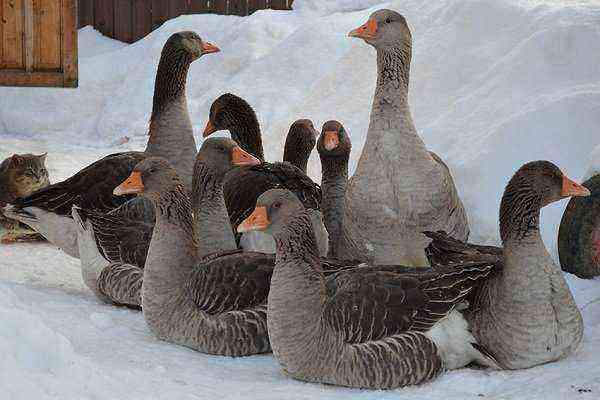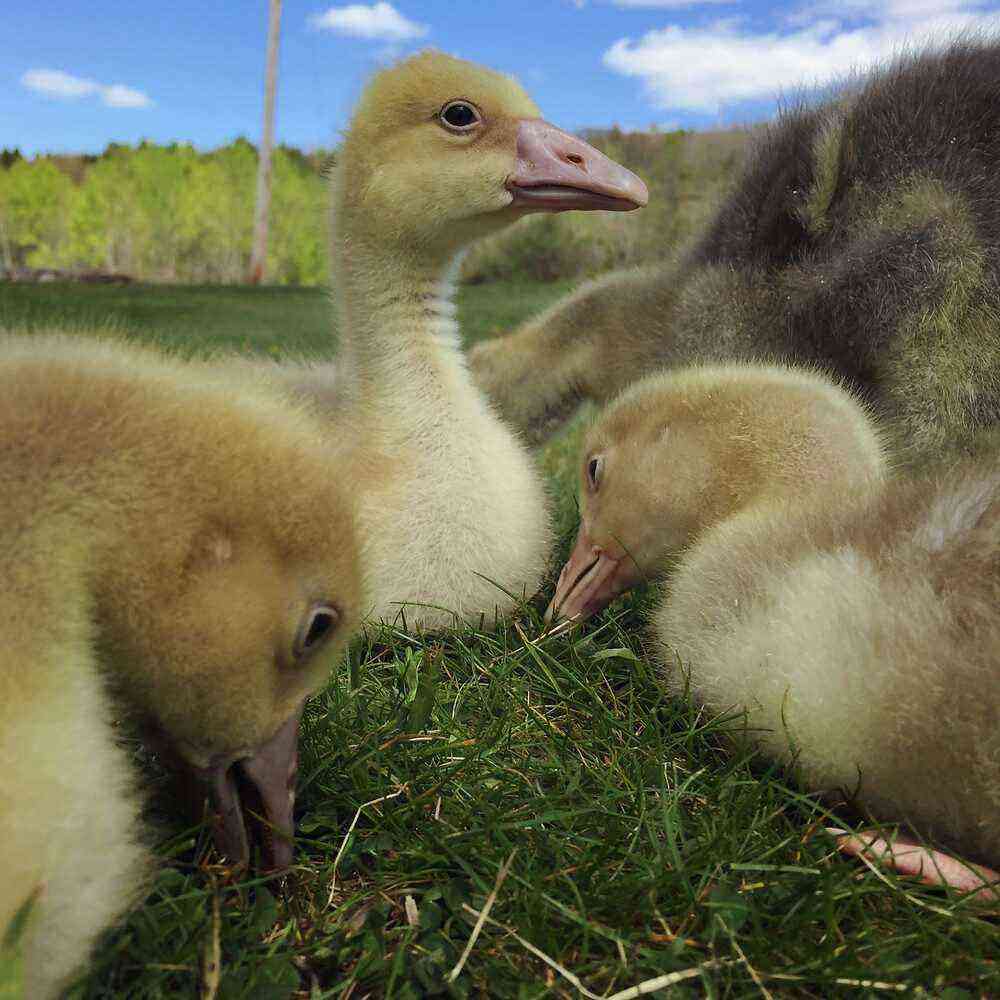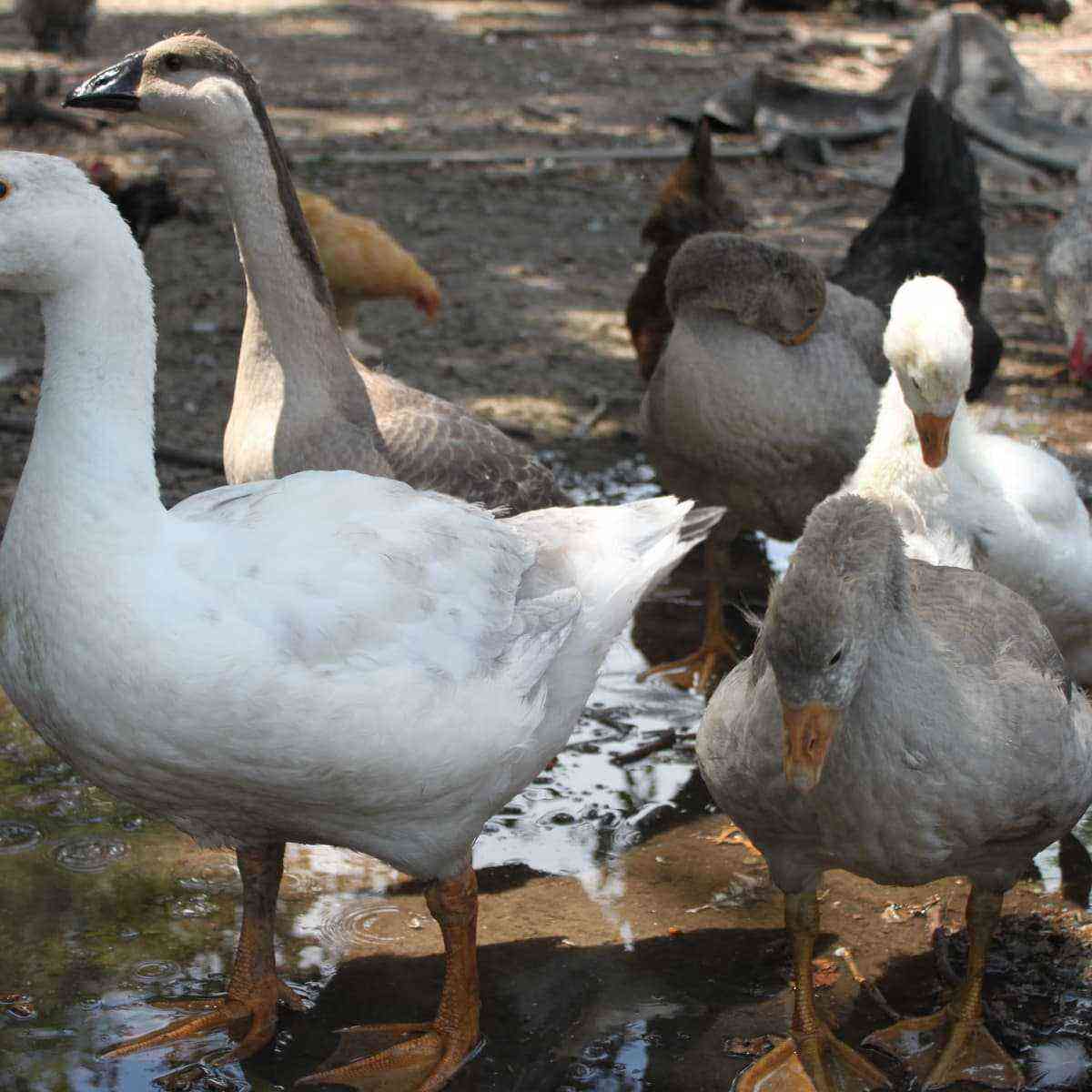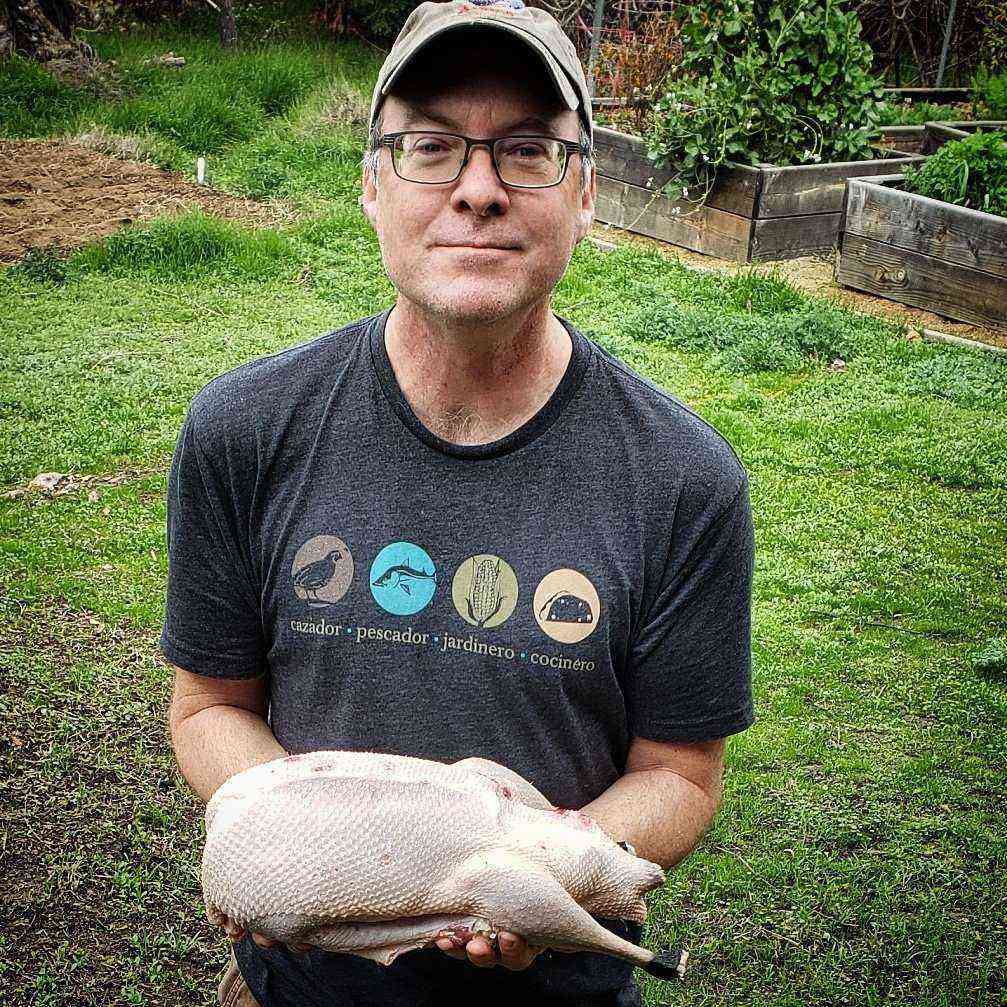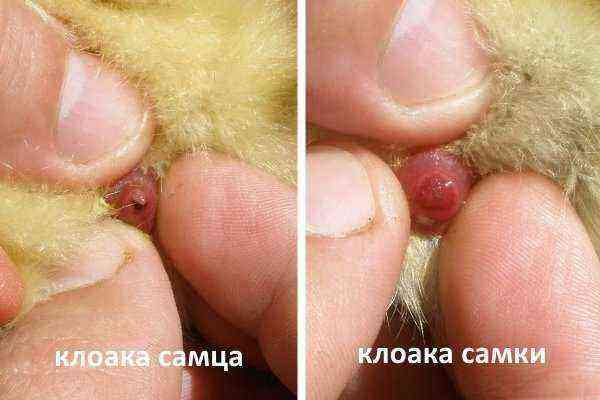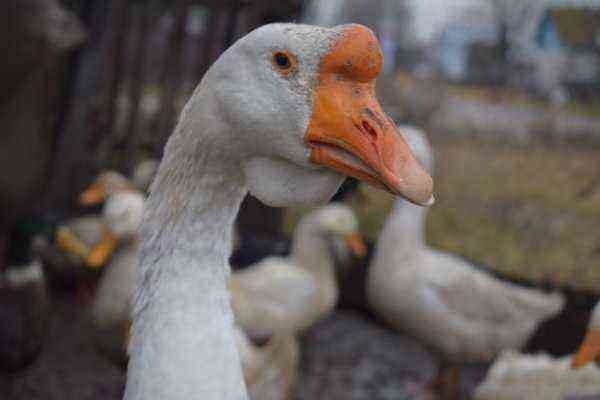Wild geese are cautious and reasonable birds, they prefer to live in flocks. Despite the fact that many species have already been tamed by man, there are still many individuals in the world that survive in the wild and successfully cope with the harsh cold climate. Their way of life is unique and attracts the attention of ecologists, biologists and ordinary people around the world.
History of domestication of wild geese
It is believed that it was the wild goose that became the first poultry. Due to the fact that this waterfowl has an excellent appetite and is easy to feed, it is quite easy to discourage it from having to travel long distances.
Taken for domestication, wild geese chicks, after two generations, are domesticated and get used to humans. Today, geese breeding is a profitable activity in many regions of Russia.
Description of the wild goose
The wild goose is a massive and fairly large bird that makes long flights to a warmer climate for the winter. The ability to swim and dive to great depths allows them to hide on the water from danger.
Appearance
The wild goose is much smaller than the swan. The bird has a relatively light body and a short neck. The goose beak, in comparison with the duck, is longer, narrower and set high.
Male and female have the same color. The most common shades of feathers:
- white:
- ashen;
- the black;
- brown tint.
Vote
Most individuals have a sonorous and high voice. Birds communicate with each other loudly. The male can be distinguished by a slightly muffled cackle.
With a full stomach or while resting, the bird can barely audibly mutter under his breath. However, if the bird is alarmed or frightened, then its ligaments emit a prolonged loud cry.
Habits
Regardless of the species, wild geese build nests on land or near water bodies. Some species prefer to nest on their own, while others do so in pairs or entire colonies.
Not many people know, but the wild goose is very devoted to his partner.
The gosling becomes attached to those with whom it lives (mother, brothers and sisters). When breeding chicks with the help of an incubator, the gosling becomes attached to a person.
Species of wild geese
The variety of species of wild geese can amaze a person. Individuals of different species differ not only visually (the shade of feathers, beak size, etc.), but also preferences in food and habitats. To date, 12 species of wild goose have been recorded, each of which has already been perfectly studied by man.
Grey goose
Individuals of this species have a massive neck, a large pinkish beak and ash gray feathers. Wingspan – 170 cm.
There are no significant differences between females and males. The only thing that can indicate gender is size. The male is slightly larger than the female.
They feed mainly on tree buds, berries, leaves and acorns. The weight of the gray goose can reach up to 5 kg. The carcass does not exceed 90 cm in length.
Goumennik
Individuals of this species are characterized by a gray color of feathers with a black beak. The weight of the bird varies from 2 to 5 kg. The length of the carcass barely reaches 80 cm.
For the winter period, the bean goose is sent to Western European countries. The basis of the diet is cereals and vegetables. Preferred Habitat:
- swamps;
- rivers;
- closed reservoirs.
White or polar goose
The habitat of this species is the cold Canadian and Siberian lands. However, during the winter, the white goose makes a long flight to the Gulf of Mexico.
Because of their spectacular appearance, white feather with black edging, polar geese have been subject to cruel extermination by humans. They are the most socially developed group among other species and prefer to live in thousands of flocks.
The basis of nutrition are cereals, lichens and leafy shoots.
Sukhonos
A distinctive characteristic of the dry nose is its large size. The carcass reaches a length of 120 cm. The wingspan is 180 cm. The mass of an adult individual reaches 6 kg.
They live on dry land. When threatened by a person or animals, dry noses camouflage themselves in tall grass. Able to dive to great depths. They feed mainly on sedge, foliage and wild berries.
mountain goose
Individuals of this species are widespread in the mountains in the southern strip of Asia. In winter, they fly closer to the lands of India and Pakistan.
The mountain wild goose is characterized by the presence of dark stripes, symmetrically located on the top of the head. In length, individuals barely reach 90 cm. The wingspan can reach 170 cm. The mass does not exceed 3 kg.
In the diet of mountain geese, in addition to plant food, there is also animal food (worms with larvae, small insects).
This species of geese is the only one capable of climbing to a height of more than 11 meters.
chicken goose
For Russians, the chicken goose may seem like an exotic bird, since these individuals are common mainly in Australia. The main difference from other species is the presence of a miniature beak, small head size and red paws.
The mass of the bird does not exceed 7 kg, respectively, the carcass varies from 80 to 110 cm. Due to the fact that the chicken goose is not adapted for swimming, it spends most of its time on land. The basis of the diet is larvae of worms, mollusks, roots and cereals.
Nile or Egyptian goose
The name of the bird was due to its origin. Approximately 300 years ago, they were first imported to European lands.
The color of the Nile goose is interesting – the presence of white, gray and brown shades. Individuals are miniature, barely reaching a mass of 3 kg.
The wingspan is small, up to one and a half meters. Egyptian geese feed on grass, plant seeds and small insects.
andean goose
Due to the structure of its body, the Andean goose prefers to stay on land, entering the water only in case of danger. The female is inferior in size to the male.
The mass of the bird does not exceed 3 kg. The length of the carcass is 80 cm. Individuals of this species prefer to spend time in open areas, in the mountains, in meadows near pastures. The basis of the diet is grass, small insects and cereals.
Magellanic goose
You can meet this species in the southern lands of America, Chile and Argentina. The preferred habitat for Magellanic geese are plains and mountain slopes, as well as meadows with tall grass.
Color varies depending on gender. For example, the female has brown feathers, while the male is pure white. Life expectancy under favorable conditions reaches 25 years.
They can cause serious problems for farmers, as they are able to absorb most of the planted cereal crops.
white goose
Like the arctic geese, the white geese thrive in the cold climate of Canada and some parts of Alaska. Individuals barely reach a mass of 3 kg and a length of 80 cm.
The basis of the diet is plant foods. This type of geese lives for a relatively short time – 6 years.
Goose
Visually, the goose resembles a wild goose, but has a smaller size. The cackle characteristic of geese is given to them unimportantly. The sounds made by geese are more like howling dogs.
To date, geese have a huge number of subspecies. Below are the most common.
Canadian
Perhaps the most popular type of goose. You can meet these individuals in some regions of Canada and Alaska. The feathers of the Canada Goose are deep brown, with only the neck being jet black.
Despite the fact that the bird prefers a harsh cold climate, it can still be found in small numbers in England and some Scandinavian countries.
red-throated
One of the most visually appealing species. The body of the red-throated goose is painted in a beautiful chocolate shade. The back and wings are covered with black and white feathers, creating incredible patterns.
Individuals of this species have been successfully domesticated. Due to their miniature size, they are rarely used in the household. The bird is usually bred in a zoo.
Black
The black goose is a rare representative of the wild goose. The preferred habitat is the tundra. It is quite difficult to meet black geese in the wild, but it is possible in the northern regions of countries such as Canada and America.
The basis of the diet is plants and grass.
White-cheeked
Visually, the barnacle goose resembles the Canadian goose, but differs in gray with black color. Predominantly nests in mountainous or open areas. You can meet her in many European countries.
Hawaiian
Already from the name you can determine the habitat of this species – Hawaii. It is a rare species that, over the past years, ecologists and biologists have been trying to save from extinction.
The basis of the diet is plants, cereals and small insects.
The range and habitat of the goose
Most species of wild geese prefer open areas with tall grass and access to a body of water or a river. This choice is due to the plant diet of the bird. And the thick grass allows the geese to hide from possible danger. Some populations nest in mountains and on rocks.
Food
As mentioned earlier, wild geese feed mainly on plant foods, that is, berries, grass, some types of plants, cereals and vegetables. However, many species do not disdain food of animal origin. The ability to swim allows wild geese to hunt small fish and insects.
Nesting
Depending on the species, nesting may occur:
- in open areas (in the tundra, in meadows and fields);
- in closed areas (on rocks, in mountains);
- near a pond or river.
Geese prefer to nest in colonies, but when building a nest, a pair tries to occupy a site that carefully protects from neighboring pairs.
wintering birds
Migration of wild geese occurs twice during one year, which begins in mid-autumn. Birds cover great distances. By the end of spring, the geese return to their former habitat.
In some European countries, there are individuals who are adapted to a cold climate and can afford to lead a sedentary lifestyle.
Dangers and Enemies
In a dangerous or threatening situation, the goose stretches out in the neck and begins to closely look around the environment, emitting a long and loud cackle.
The main enemies of wild geese are representatives of the mustelid family, that is, the ferret, fox and marten. Sometimes goslings can become victims of other birds, such as crows. The open habitats of geese make it easier for predators to hunt.
Features of keeping and breeding wild birds in captivity
Since the goose is a fairly unpretentious bird, given its diet and adaptability to a cold climate, keeping and breeding this bird is a profitable business.
The only thing worth focusing on is the large area of uXNUMXbuXNUMXbthe enclosure, as well as access to open areas where geese can graze. This is due to the wild nature of the goose – this bird loves space.
Reproduction and offspring of the wild goose
Features of breeding birds at home:
- In order for geese to breed successfully in captivity, care must be taken to increase daylight hours. This can be achieved by installing artificial light in the house for the winter period.
- Daylight hours in winter for a wild goose should be 13 hours. To save offspring, it is recommended to independently install nests, the size of which will be at least 60 cm, the height of the side is not more than 15 cm.
- Puberty of geese occurs in the third year of life. It is during this period that birds try to find a partner for themselves and start building a nest for future incubation of eggs.
- To keep the nest warm, it is advisable to additionally lay bedding made of down or feather bed. In one season, the female is able to produce from 50 to 70 eggs.
Status and commercial value
Being a wild bird, quite often the goose is hunted, not only for the purpose of keeping and breeding, but also for obtaining tasty meat. Man has long been able to study the characteristic habits of this bird and hunting for a wild goose, as a rule, thanks to a well-established strategy and traps, ends successfully.
In most cases, birds are shot to get meat. Despite the fact that the populations of most species are numerous, some of them are still subject to extinction.
Nutritional qualities of the wild goose
Wild goose meat is dark in color and has a greasy texture. Due to the predominance of natural plant foods in the poultry diet, the meat has a unique aroma with a sweet aftertaste.
Culinary experts have been coming up with a variety of goose dishes for many years. It is perfect for making rich broths, baking and frying.
Goose meat is of great nutritional value due to the impressive content of high-quality protein. Also in the composition of goose you can find the necessary vitamins (A and C) and minerals for the proper development of the human body. Goose meat contributes to the active production of bile and strengthens the walls of blood vessels.
There are many types of wild geese. All of them are unique, and our article helps to understand their habitat, food and nesting in more detail. And useful recommendations will allow you to properly domesticate a bird.
